Category Archives: The Red Folder
Photography prize, Tesla collision course, climate-change cross stitch
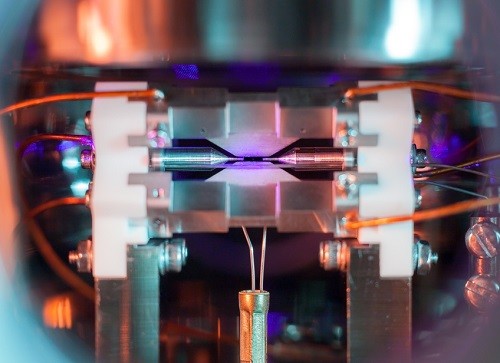
Pale blue dot: image of a strontium atom in an ion trap bags national photography prize (courtesy: David Nadlinger – University of Oxford)
By Michael Banks
An image of a single positively-charged strontium atom that is held in an ion trap by electric fields has won a national science photography competition organised by the UK’s Engineering and Physical Sciences Research Council.
Taken by PhD student David Nadlinger from the University of Oxford, the image shows the light emitted from the atom when it absorbs laser light tuned to a specific frequency. The picture was taken through a window of the ultra-high vacuum chamber that houses the ion trap.
“The idea of being able to see a single atom with the naked eye had struck me as a wonderfully direct and visceral bridge between the minuscule quantum world and our macroscopic reality,” says Nadlinger. “When I set off to the lab with camera and tripods one quiet Sunday afternoon, I was rewarded with this particular picture of a small, pale blue dot.”
Moving onto space, the successful launch of SpaceX‘s Falcon Heavy rocket last week resulted in a Tesla Roadster (formally owned by SpaceX boss Elon Musk) in orbit around the Sun. Used only as a test mass, the car featured a spacesuit-clad mannequin called “Starman” in the driver’s seat.
Physics of ski jackets, the eerie sound of thin ice, how figure skaters linger in mid-air
By Michael Banks and Hamish Johnston
Probably with an eye on the Winter Olympics, which starts today, two firms have just released new ranges of high-tech ski jackets. The Swiss technology business Osmotex and the Swiss Federal Laboratories for Materials Science and Technology premiered their new ski jacket at the sport and sportwear international (ISPO) trade fair in Munich. It contains an “electro-osmotic” membrane called HYDRO_BOT in the fabric so that when membrane is switched on with a conventional battery it speeds up the transfer of salt ions across the membrane, taking them away from your sweaty skin. The creators claim it can pump out 10 litres of liquid per square metre per hour. For more details, see the video above.
View all posts by this author | View this author's profile
Happy Hedgehog Day, play like Einstein, Hawking could be in court over NHS

Magnetic hedgehog: illustration of a skyrmion (Courtesy: Wiesendanger Group, University of Hamburg)
By Michael Banks and Hamish Johnston
Today, people are celebrating Hedgehog Day – possibly as an alternative to Groundhog Day, which is a tradition in North America. There is a nice connection between the spiny critters and physics because diagrams illustrating magnetic quasiparticles called skyrmions are sometimes referred to as hedgehogs. This is because the magnetization associated with a skyrmion can resemble the spines of the hedgehog. The above image is from a news story about skyrmion research done by Kirsten von Bergmann, André Kubetzka and Roland Wiesendanger at the University of Hamburg.
View all posts by this author | View this author's profile
Physicists bag Australian and Senior Australian of the Year, Doomsday Clock ticks closer to midnight

Award winning: Australian of the Year Michelle Simmons (Courtesy: UNSW)
By Hamish Johnston
Today is Australia Day, when the prestigious Australian of the Year award is conferred. This year’s winner is the quantum physicist Michelle Simmons of the University of New South Wales who famously built a transistor from just one atom and also created what could be the world’s thinnest wire. Also honoured today is biophysicist Graham Farquhar of the Australian National University. He is Senior Australian of the Year for 2018 and an expert in photosynthesis. It looks like this will be a bonzer year for physics in Oz.
View all posts by this author | View this author's profile
Lucky physicists, runways renamed as magnetic poles shift, what happened to the Zuma spacecraft?

Lucky ping: the invention of the microwave oven. (Courtesy: Perimeter Institute)
By Hamish Johnston
“In the fields of observation, fortune favours the prepared mind,” is a quote attributed to Louis Pasteur and it encapsulates the role of luck in scientific investigation. The Perimeter Institute for Theoretical Physics in Canada has put together a list of eight scientific breakthroughs that benefited from a little luck. Examples include Ernest Rutherford and colleagues measuring alpha-particle backscattering when they were really interested in how the particles travelled through the target – which resulted in the discovery of the atomic nucleus. But my favourite is how the microwave oven was invented, as described above.
View all posts by this author | View this author's profile
Citizen science, astronaut growth, water-flipping physics
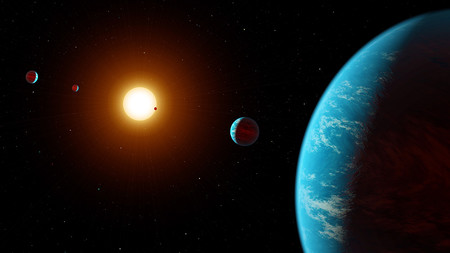
Planet hunting (courtesy: NASA/JPL-Caltech/R. Hurt)
By Michael Banks
This week the American Astronomical Society is meeting in Washington, D.C. At the conference it was announced yesterday that a citizen-scientist project called Exoplanet Explorers had used data from the Kepler mission to detect a new five-planet system.
The 27 authors include, among others, the astronomer and broadcaster Chris Lintott and the particle physicist and broadcaster Brian Cox. Exoplanet Explorers was featured prominently on the Australian TV show Stargazing Live in April and another author on the paper is the Australian TV presenter Julia Zemiro, who is affiliated with the Australian Broadcasting Corporation. You can read the paper here. (more…)
View all posts by this author | View this author's profile
US candidates on science policy, your satellite idea could bag a share in £50,000

No denying: Democratic Party candidate Elizabeth Moro. (Courtesy: Elizabeth Moro)
By Hamish Johnston
The Science Debate organization sent out questions about science policy to candidates in the 2018 US elections and the answers are in (at least some of them). Prospective US representatives, senators and state governors were queried on 10 topics ranging from climate change to the importance of science to American prosperity.
James Henry, a Democratic Party candidate in Florida, pointed out: “If you look at your monthly credit card statement and remember the kinds of products and services you spent your money on recently, many of the items purchased probably did not even exist 10 or 20 years ago.” This, he added, is why “It is critical that the government encourage a proactive approach to technology”.
View all posts by this author | View this author's profile
The 10 quirkiest physics stories of 2017
By Michael Banks
From the law of defecation to CERN emojis, physics has had its fair share of quirky stories this year. Here is our pick of the 10 best, not in any particular order.
Marten on display
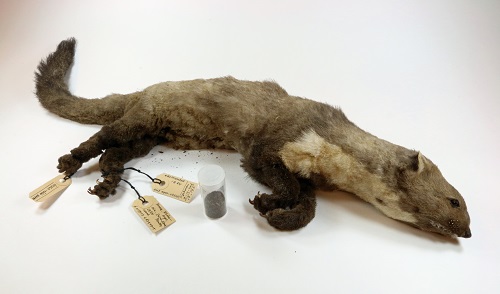
Stuffed. (Courtesy: Natural History Museum of Rotterdam)
You may remember the strange story last year of a marten that entered an electrical outbuilding at CERN and gnawed through a 66 kV transformer. The move ended up frying the weasel-like creature and triggering a wide power outage at the Large Hadron Collider (LHC). But when another marten met its doom in November 2016 by chewing on an 18 kV transformer, the animal was kept for posterity, rather than being disposed of like its chum. The 18 kV marten was stuffed and earlier this year went on display at the Rotterdam Natural History Museum’s Dead Animal Tales exhibition. “With a growing human population size and ongoing habitat destruction and urbanization, man and animal more often share the same environment. We have to be prepared for more collisions,” museum director Kees Moeliker told Physics World. “This tiny creature shutting down the LHC is, in a way, poetic, and as such deserves a place of honour in our exhibit.”
View all posts by this author | View this author's profile
New constellations, happy birthday Kristian Birkeland, ‘There once was a chemist from Bath…’
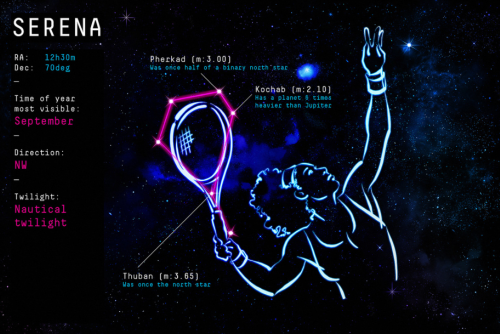
Reach for the stars: constellation Serena (Courtesy: University of Birmingham)
By Hamish Johnston
Astronomers at the University of Birmingham have dreamt-up a set of modern constellations in a bid to inspire young people to take an interest in the cosmos. The constellations are related to eight admirable people including J K Rowling, Usain Bolt, Malala Yousafzai, David Attenborough, Mo Farah and Michael Bond. But my favourite is the tennis racquet shaped constellation Serena, named after Serena Williams.
View all posts by this author | View this author's profile
A puzzling neutrino detector, the best way to crumple cans
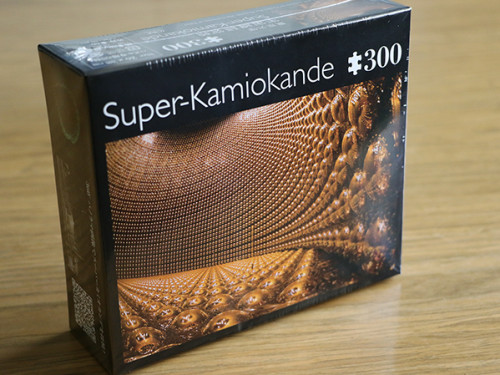
Standard model: Super Kamiokande jigsaw puzzle (Courtesy: ICRR)
By Michael Banks
If you are looking for a Christmas present for a puzzle lover, the Institute for Cosmic Ray Research (ICRR) in Tokyo, Japan, has just the thing. It’s created a 300-piece jigsaw puzzle of the Super Kamiokande neutrino detecter in Kamioka, Japan. The detector is a giant stainless-steel tank filled with 50, 000 tonnes of ultra-pure water and lined with 13,000 photo-multiplier tubes that detect the Cherenkov radiation released when a neutrino collides with a water molecule. In other words, it’s a jigsaw puzzle featuring water and lots and lots of identical tubes.
Costing ¥1500 (£10) and with a finished size of 38 x 26 cm, a limited number of the jigsaws went on sale in late October. But its fiendish nature doesn’t seem to have put anyone off: the puzzle sold out within days. Jigsaw enthusiasts, however, will be pleased to know that, as, the ICRR is planning to release more. (more…)
View all posts by this author | View this author's profile